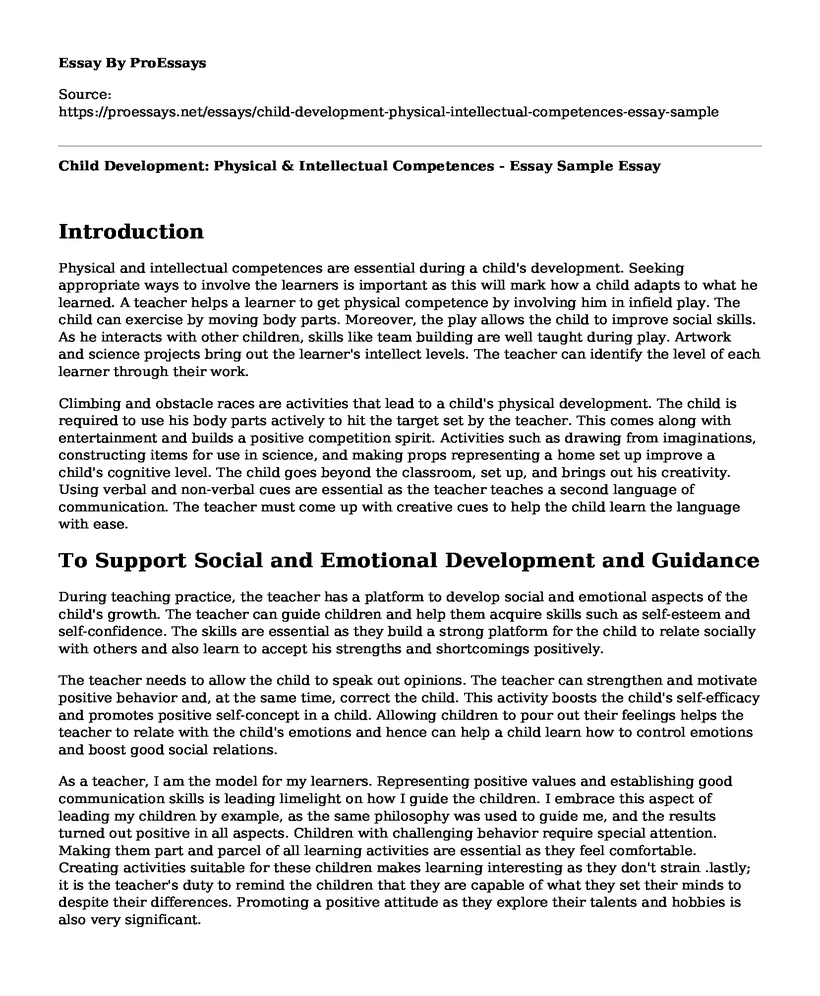Introduction
Physical and intellectual competences are essential during a child's development. Seeking appropriate ways to involve the learners is important as this will mark how a child adapts to what he learned. A teacher helps a learner to get physical competence by involving him in infield play. The child can exercise by moving body parts. Moreover, the play allows the child to improve social skills. As he interacts with other children, skills like team building are well taught during play. Artwork and science projects bring out the learner's intellect levels. The teacher can identify the level of each learner through their work.
Climbing and obstacle races are activities that lead to a child's physical development. The child is required to use his body parts actively to hit the target set by the teacher. This comes along with entertainment and builds a positive competition spirit. Activities such as drawing from imaginations, constructing items for use in science, and making props representing a home set up improve a child's cognitive level. The child goes beyond the classroom, set up, and brings out his creativity. Using verbal and non-verbal cues are essential as the teacher teaches a second language of communication. The teacher must come up with creative cues to help the child learn the language with ease.
To Support Social and Emotional Development and Guidance
During teaching practice, the teacher has a platform to develop social and emotional aspects of the child's growth. The teacher can guide children and help them acquire skills such as self-esteem and self-confidence. The skills are essential as they build a strong platform for the child to relate socially with others and also learn to accept his strengths and shortcomings positively.
The teacher needs to allow the child to speak out opinions. The teacher can strengthen and motivate positive behavior and, at the same time, correct the child. This activity boosts the child's self-efficacy and promotes positive self-concept in a child. Allowing children to pour out their feelings helps the teacher to relate with the child's emotions and hence can help a child learn how to control emotions and boost good social relations.
As a teacher, I am the model for my learners. Representing positive values and establishing good communication skills is leading limelight on how I guide the children. I embrace this aspect of leading my children by example, as the same philosophy was used to guide me, and the results turned out positive in all aspects. Children with challenging behavior require special attention. Making them part and parcel of all learning activities are essential as they feel comfortable. Creating activities suitable for these children makes learning interesting as they don't strain .lastly; it is the teacher's duty to remind the children that they are capable of what they set their minds to despite their differences. Promoting a positive attitude as they explore their talents and hobbies is also very significant.
Cite this page
Child Development: Physical & Intellectual Competences - Essay Sample. (2023, Jul 04). Retrieved from https://proessays.net/essays/child-development-physical-intellectual-competences-essay-sample
If you are the original author of this essay and no longer wish to have it published on the ProEssays website, please click below to request its removal:
- Personal Essays
- My Life in College Essay
- Post-Colonial Theory: The Individual and the Nation in Ngugi Essay
- My Biggest Concern with the Lottery System - Essay Sample
- Essay Example on A Seven-Year-Old's Struggles of Adjustment in an Ohio Foster Home
- Essay on Religion in the US: The Conflict between the First Amendment and Public Schools
- Essay Example on My Professional Journey: A Nurse's Ambition to Grow and Succeed







